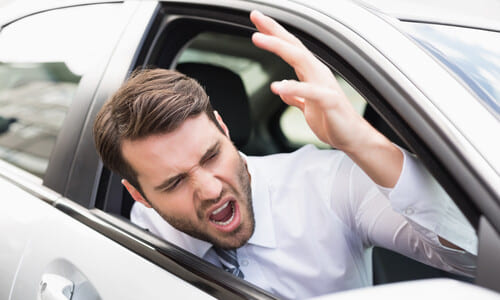 Do I need a Hartford Aggressive Driving Accident Lawyer?
Do I need a Hartford Aggressive Driving Accident Lawyer?“Drive defensively” is one of the first things registered drivers are taught when learning the rules of the road. Despite this, aggressive driving continues to plague just about every state, with Connecticut being no exception.
In fact, Connecticut ranks among the worst states for aggressive behaviors on the road. According to Forbes, 71.5% of drivers in the state have been tailgated, and 20.5% have experienced being outright forced off the road.
When these behaviors lead to accidents and injuries in Hartford, your best bet for compensation is an aggressive driving lawyer.
As with most personal injury cases involving vehicles, aggressive driving accidents can quickly overwhelm victims, especially during the initial months after the event. Road accident victims often sustain serious injuries that get in the way of their daily lives, preventing them from tending to their work, their relationships, and even the process of recovery itself.
Aggressive driving attorneys ease these burdens experienced by their clients by taking on the challenge of the legal system on their part. They back their clients’ interests when facing at-fault parties and their representatives, ensuring fair compensation for the damages they incurred in the accident.
Here are some services you can take advantage of when you work with an aggressive driving attorney:
When we talk about aggressive driving, we refer to behaviors behind the wheel of a vehicle that are dangerous, hostile, or, at the very least, intimidating to other road users. As the name implies, this is the opposite of defensive driving, which itself means anticipating and avoiding road hazards and accident risks.
Connecticut law does not define aggressive driving per se, though it is easily identifiable when on the road. Instead, the state addresses cases of aggressive driving through the Reckless Driving Law, CT Gen Stat § 14-222.
What this means is that while aggressive driving isn’t directly explained, actions that constitute aggressive driving – and thus fall under the broader spectrum of reckless driving – are considered aggressive and illegal.
It’s commonly understood that aggressive driving includes any behavior a person in control of a vehicle actively engages in that increases the danger to others. The most common examples of aggressive driving are as follows:
Because an act of aggressive driving can fall under different statutes according to the law, the specific penalties for each act will vary depending on the circumstances. Generally speaking, however, most cases of aggressive driving can be penalized under the Reckless Driving Law.
Under the Reckless Driving Law, first-time offenders will be fined between 100 and 300 dollars, imprisoned for up to 30 days, or both imprisoned and fined to the same limits. These penalties increase for each subsequent offense, up to a maximum of a 600 dollar fine and a year in prison.
However, as mentioned above, some aggressive acts, such as rude gestures and honking, do not necessarily count as offenses under the Reckless Driving Law. This is because the said statute only prohibits driving a vehicle at dangerous speeds, driving with clutch or gears disengaged, or knowingly operating a vehicle with a defect, but the point is that not every possible situation is covered under this law.
As a result of this, such acts will commonly be penalized under other traffic laws, most often the Distracted Driving Law. Alternatively, acts of aggressive driving can be attributed to other illegal activities, such as a DUI, which allows the court to penalize for that instead.
If an act falls under distracted driving, the driver will be fined 200 dollars for the first offense, 375 for the second, and 625 for any violations after that. If an act is attributed to a DUI, penalties include both a fine and jail time.
If found guilty of a DUI, a driver will be fined between 500 and 1000 dollars for a first offense and be imprisoned for up to 6 months, the first two days of which cannot be suspended or reduced.
A second DUI violation within ten years from the first results in a fine of between 1000 and 4000 dollars. This also carries a maximum prison sentence of two years, the first 120 days of which cannot be suspended.
Third and subsequent violations of the law within ten years of the last result in a 2000 to 8000 dollar fine and a prison sentence of up to three years. The first full year of this sentence cannot be suspended.
In addition to these, drivers convicted of a DUI will also have their driver’s license suspended for 45 days (or permanently upon the third offense) and will be required to have an ignition interlock installed on any vehicles they drive upon restoration of driving privileges. A standard 100 hours of community service is also required as part of probation per offense, and if the courts deem it necessary, the driver will have to attend a treatment program for their substance abuse.
When you need to recover from your losses after an accident involving an aggressive driver, Bert McDowell Injury Law has the skills and experience you need to get your life back on track. Work with us today and maximize the value of your Hartford personal injury claim.
At Bert McDowell Injury Law, we look to provide you with ease of mind. To this end, we do not charge you anything until we get your settlement, and you have no obligation to work with us after your assessment, so there is zero risk to you.
We offer our services in both English and Spanish. Contact us today for your case evaluation at (203) 633-7449 and Bring On Bert!